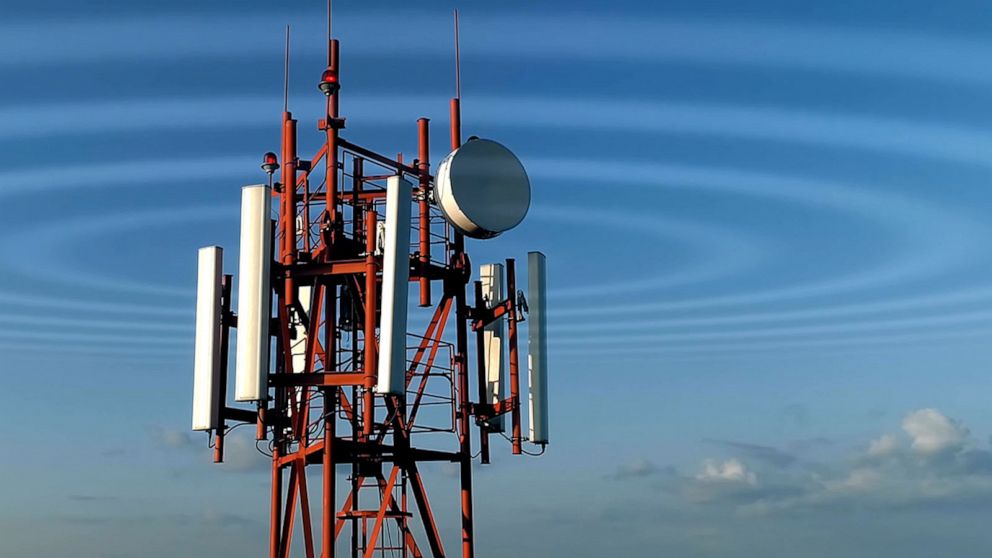If you've ever been through a city and spotted tiny cell towers for 5G placed on poles for street lighting. They look like small boxes however they're actually sending wireless signals from cell phone providers to your mobile.

These smaller towers are replacing the larger specially-designed cell towers. While they're not as noticeable but they can still cause issues for users.
A of the FCC's Radiation Exposure Thresholds
The FCC's Radiation Exposure Thresholds establish the maximum amount of time a person can be exposed to electromagnetic radiation from wireless devices. The exposure limits are based on scientific data that show that RF energy could cause harm to health.
The absorption rate specific (SAR) is an indicator of the radiofrequency energy that is absorption by tissues. It's usually 1.6 Watts per kilogram averaged over one kilogram of tissue.
However, because 5g transmits at higher frequencies this could be able to increase the intensity of energy on the skin as well as other body parts. This could lead to a wide range of potential harms, including exacerbated appearance of skin conditions like dermatitis, cataracts, and skin cancer.
Because of the potentially negative effects of 5G radiation, PSU has chosen to create a general maximum power density of four mW/cm2 averaged over 1 cm2, and never to exceed 30 minutes, for the entire 5G spectrum at 3000 GHz. This localized limit is consistent with the peak SAR that is spatially averaged at 1.6 W/kg, which is averaged over 1 grams of tissues at six GHz.

The FCC's Maximum Exposure Thresholds
If you've ever operated a cell phone, then you're aware that a safe range from the tower is at least 400 meters. Learn more here is due to the power of the transmission of the cell tower is significantly increased the further your location from the tower.
While it sounds like something that's good however, those living close to towers could be more prone to health issues. For instance, a study conducted in 2014 in India found that residents who lived within 50m of cell towers experienced significant more health issues than those who lived farther distance from them.
However, this study also revealed that those who relocated into areas farther away from cell towers experienced their symptoms return to normal within a couple of days. Other studies have revealed that exposure to high frequencies of radiofrequency electromagnetic fields (EMFs) can cause brain tumors, cancers and other health issues.
This is because RF radiation, which is utilized in wireless communication, can be absorbed by the body's outer layer, the skin. It is vital to be aware of this since the skin functions as a shield against injury to the body, infection by pathogenic microorganisms, and entry of toxic substances. Additionally, it is the largest organ in the human body and is responsible for maintaining the integrity of other organs.
The FCC's Minimum Exposure Thresholds for the Minimum Exposure
The FCC's Minimum Exposure Thresholds rely on numerous assumptions that are not supported by evidence from science. These include the erroneous assumption that exposures to RF radiation are safe due to minimal radiation penetration in the human body (i.e. thermal heating of tissue).
safe distance from cell tower is also ignoring the more extensive penetration of ELF elements of modulated radio signals, as well as the consequences on the body of short bursts caused by RF pulses. These assumptions do not correspond with current understanding of the biological effects of RF radiation, and thus they should not be used for health protective exposure standards.
In addition, the ICNIRP and FCC limit their exposure limits to local peak SARs based on the maximum frequency of absorption (psSAR) that is not a reliable dosimetric instrument to determine the degree of exposure to RF radiation. In particular the psSAR tool is not accurate for frequencies that exceed 6 GHz. Furthermore, psSAR has not been tested for RF radiation exposed to other environmental agents such like sunlight. In safe distance from cell tower of interactions, RF radiation and other agents in the environment could produce synergistic or antagonistic impacts. This would result in an increased risk of adverse health effects. For instance, exposure to RF radiation along with exposure to sunlight can raise the chance of developing skin cancer, and may also exacerbate other skin conditions like acne.
